
IMDC’s North Sea Metocean Database
IMDC developed a North Sea Metocean Database to fulfil the need for reliable long-term time series and statistics of metocean for offshore engineering projects.
Collecting reliable metocean data is an essential step for many scientific research and engineering projects, e.g. metocean analysis and downtime analysis. It can be difficult with purely measurements which often contain data gaps in both space and time. This is even more challenging when the study requires long-term data for a certain large domain.
To fulfil the needs of using reliable metocean data, the IMDC’s North Sea Metocean Database has been constructed based on a long-term simulation of in-house iCSM model for 44 years from 1979 to 2022. The iCSM is a tidal surge model developed in TELEMAC-2D, focusing on the continental shelf of the North Sea. The model has been systematically calibrated and validated on water level and velocities for both ordinary and extreme events (Chu et al., 2020). The model is automatically calibrated on spatially varying bottom friction recently on the platform SALOME – Hydro with three-dimensional variational assimilation (3D-Var) (Chu et al., 2022). The model shows reliable ability to precisely reproduce the hydrodynamics in the North Sea.
IMDC’s North Sea Metocean Database provides:
- 44-year time series of water level and velocity data with 10-minute interval at +16,500 specific sites including:
- All the conventional measurement stations inside of the North Sea.
- All the wind farm sites inside of the North Sea.
- Online statistics were performed during the 44-year simulation, providing:
- Amplitude/phase of 15 tidal components.
- Tidal range (spring, average and neap).
- Maximum, minimum, mean and standard deviation of water level and velocity.
- Histogram of water level and velocities with pre-defined bin sizes.
- Wind and wave time series based on 40-year global hindcasts.
- Automatic downtime assessment with our GONG tool.
References:
Chu K., Breugem W.A., Wang L. & Decrop B. (2022). Automatic calibration of a continental shelf model of the North Sea using data assimilation algorithm. Proceedings of the of the 39th IAHR World Congress, International Association for Hydro-Environment Engineering and Research, Granada, Spain.
Chu, K., Breugem, A., Wolf, T., Decrop, B. (2020). Improvement of a continental shelf model of the North Sea. TELEMAC User Conference, Proceeding.
Below are several examples showing the maximum water level, velocity and water level percentile of 95, frequency table at Westhinder and its associated current rose.
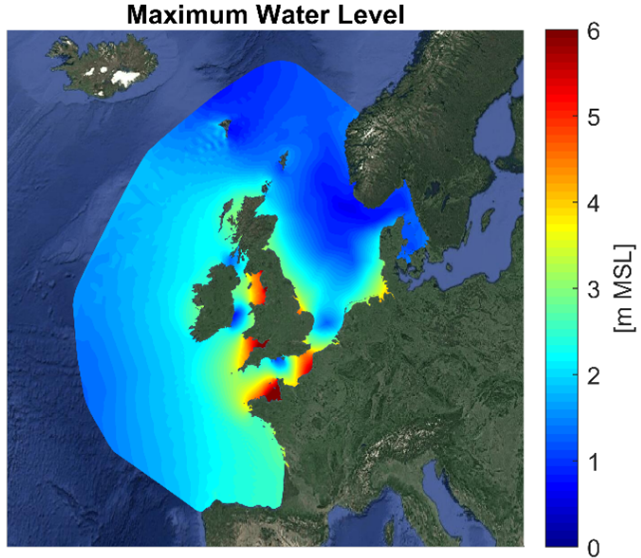
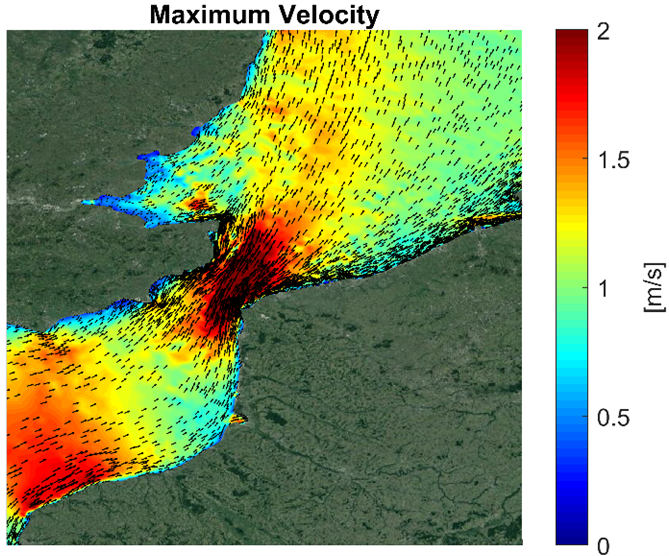
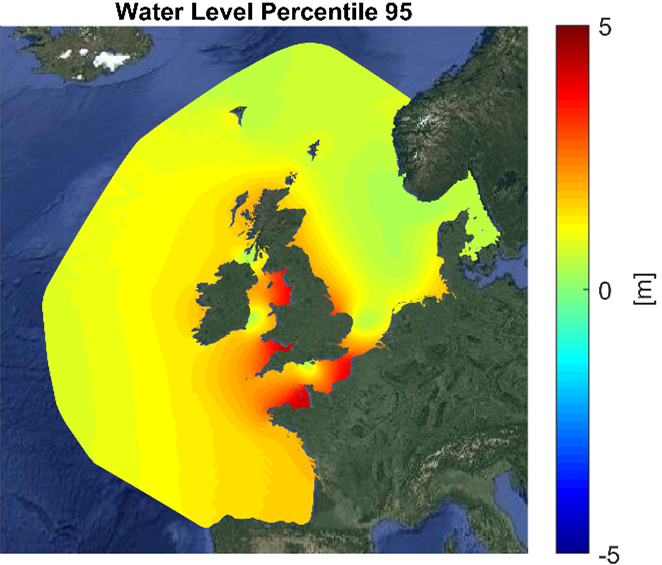
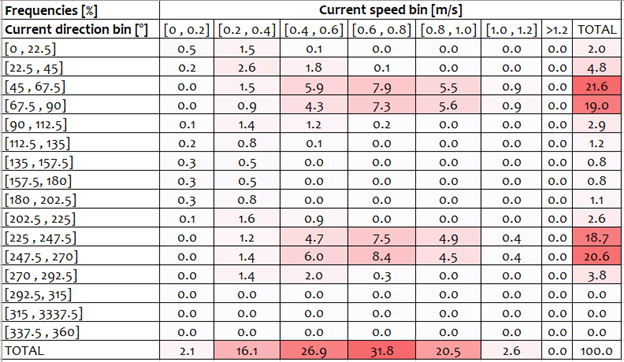
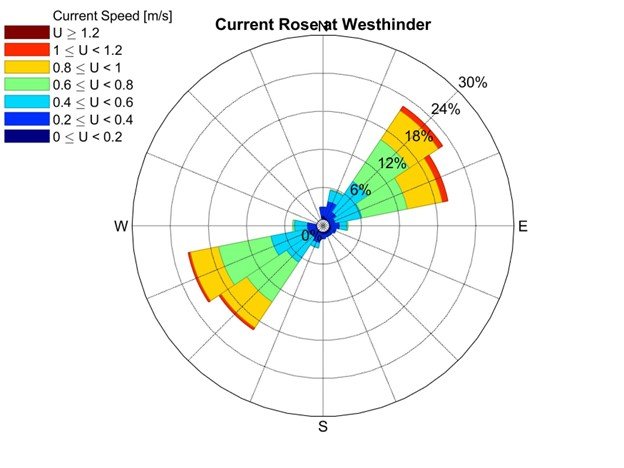
Data
- Client: Internal Project
- Start date: November 2020
- Completion date: January 2021

